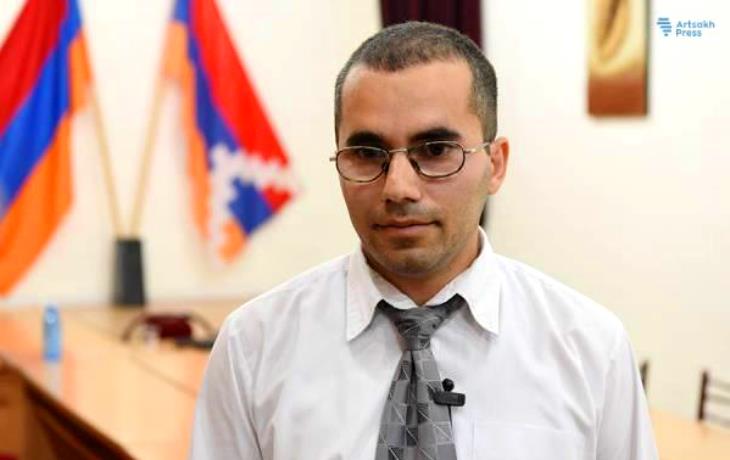in Russian – https://aga-tribunal.info/avanesov_textbooks/
An article in HayDzayn, March 30, 2018.
Other publications by Hovik Avanesov – here.
Part two
The subject of “Khojalu” is an integral part of not only the school textbooks on the “History of Azerbaijan”, but also, for example, the Russian language subject for the 4th grade.
In the Russian language textbook for the 4th grade we read: “The preparation for the offensive was launched on the evening of February 25. Storming of the city began with a two-hour shelling of tanks, armored personnel carriers, guns with shells “Alazan.” Khojalu was blocked from three sides, and people tried to escape, fleeing to the forest in the Askeran direction. But it soon became clear that this was an ominous trap. Near the village of Nakhichevan, Armenian groups opened fire on unarmed people”.
Ex-president Ayaz Mutalibov confessed in March 1992: “… the Armenians had left the corridor, by which people could leave the zone. Why should they shoot then? Moreover, it was on the territory close to Aghdam, where by that time there were enough resources to go out and help people”.
The following words of Ayaz Mutalibov testify to the fact that the Azerbaijani country was warned about the operation: “… the attack on Khojalu was not unexpected, in Baku they knew about its preparation well. They also knew about the Askeran corridor, left by the Armenian side for the evacuation of civilians”.
The goal of the Russian language textbook should be teaching students the Russian language but this textbook has become another tool of anti-Armenian propaganda in the hands of Azerbaijani officials and their entourage. “The Khojalu events” are the result of dirty domestic political games. This is evidenced by the words of political and public figures of Azerbaijan, who at that time held high government posts. Below, there are the words of some of these figures.
Rustam Gajiyev, member of the Aghdam NFA board:
“…We could have helped the Khojalu people, there were resources and opportunities. But the leaders of the republic wanted to demonstrate the people that they do not have the strength, and again call for the help of the CIS army, suppressing by it the opposition as well”.
- Mamedov, Mayor of Khojalu:
“…After receiving the information on the upcoming operation of capturing the town, I asked Aghdam to send helicopters to evacuate the old, the women and the children. We were assured: tomorrow we will carry out the operation and break through the blockade. Help did not come”.
- Safaroghlu, journalist:
“…Khojalu was located in an important strategic position. The loss of Khojalu meant a political fiasco for Mutalibov”.
- Yunusov, historian and conflictologist:
“The city and its inhabitants were deliberately sacrificed for the political goal: to prevent the NFA coming to power”.
Another goal of “Khojalu events” is to create equality with the Armenian Genocide in Sumgait, Baku and other cities and settlements of Azerbaijan and Artsakh.
Conclusions:
This policy of Azerbaijani state officials pursues several goals:
- bringing up a zombie generation that hates Armenians;
- shifting their blame on others for their own failures and defeats in the war over primordially Armenian territories, accusing the USSR, and later Russia, of “participating” in the Azerbaijani-Artsakh war;
- on the basis of pseudoscientific facts to prove to the world community that the primordially Armenian territories “belonged to Azerbaijan from times immemorial”.

One thought on “Hovik Avanesov. Azerbaijan-Artsakh war coverage in Azerbaijani school textbooks”